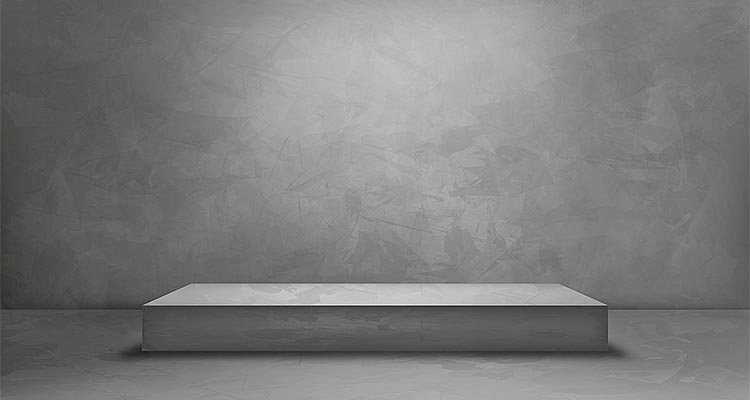The legacy of concrete and other building materials
Concrete is the literal foundation of the modern world. Apart from water, concrete is the world’s most-used material. With the earliest discovery of concrete use dating back to around 7000 BC, concrete has evolved and elevated home construction over the last 9000 years.
From ancient history to the present day, the most recent advancement can be found in NASA’s development of a waterless concrete 3D printer. A (very) long story cut short, concrete isn’t going anywhere soon. As such, it’s important to understand where concrete, and other building materials, have been. This way, we can further understand concrete’s almost limitless potential in our advancement as a species.
We spoke to the building material experts at Instarmac for their insight into the most influential building materials and their use throughout history – from mud bricks to smart concrete.
Mud bricks, 7500 BC
Unsurprisingly, bricks have been in use for thousands of years. Synonymous as the ‘building blocks’ of our great towns and cities, bricks first found life being constructed with mud back in Syria in 7500 BC.
Discovered in the city of Tell Aswad (now Turkey), these bricks were shaped with clay and mud before being left to dry in the scorching weather and harden for adequate construction. These were simple dwellings by today’s standards, but incredible innovations at the time.
Concrete, 7000 BC
The earliest discovery of concrete can be traced back to 7000 BC and was found in an Israeli hut. It was made by mixing water with quick lime and stone, then leaving it to set. Humble beginnings are a wonderful thing!
Concrete in England, 43 AD
Fast forward 7,000 years, the Roman invasion of 43 AD brought death, conquest and concrete. The invasion brought with it many weird and wonderful things, including an elephant, but concrete was perhaps the most important. It was more advanced than anything previously seen in the UK, developed using techniques that created a smooth finish while protecting the concrete core.
After the Romans left in 410 AD, they took concrete with them – including their winning recipe. It wasn’t until years passed that the secret ingredient of their superior design was discovered: Pozzolana, a type of Italian volcanic ash.
Wattle and daub, 1200 – 1500
The loss of Roman concrete wasn’t kind to UK homes. Early medieval city dwellers made do with substitute building materials such as flint, chalk and stone. During this period, we saw thatched roofs made with dry vegetation, including straw and weeds. After the 1135 London fire, thatched roofs were quickly scrapped by royal decree – leading to a new age of UK building materials.
Wattle, a kind of timber frame, came into play under Elizabeth I. They were filled with daub, a pungent mixture of dung, wet sand, clay and straw. This practice carried through to Tudor England and can still be found in Tudor homes that exist in 2024.
Return of the brick, 1500 – 1800
An all-time classic, brick reclaimed its title as one of the greatest – used extensively in the mammoth task of rebuilding London after 1666’s Great Fire of London.
Flemish Bonding, a hallmark of British period architecture, stole the limelight in this era. The beautiful character found in this style of brickwork was first seen in Dutch House, built in 1631 and found today in Kew Gardens, London. Another notable example is the stunning Hampton Court Palace, which needs no introduction.
Portland Cement, 1824
Come the 18th century, the renewed interest in concrete was driven by the need for further stability and durability within modern buildings. It was in 1824 when a breakthrough in Leeds altered the course of concrete manufacturing.
Joseph Aspdin, a pioneer of modern concrete techniques, patented Portland Cement – named due to its resemblance to Portland stone, an ingredient that forms the base of today’s concrete.
Smart concrete, 2024
Ignoring the shambles that is Reinforced Autoclaved Aerated Concrete (RAAC), modern science has brought with it a new age of ingenious building solutions. A huge swathe of modern buildings has been constructed using ‘smart concrete’, an umbrella term covering many forms of concrete with unique benefits fit for specific purposes.
Made with mineral additions or superabsorbent polymers to encourage autogenous repairs, self-healing concrete is just one example of this brilliant innovation. Another is self-sensing concrete, which senses stress and strain within itself.
Tomorrow’s concrete
If you’d travelled back in time to show the inventor of mud bricks a self-healing concrete slab, they probably would’ve spat out their tea. Thanks to NASA, humans of the future may say the same about us from a cosy semi-detached on the moon – especially since materials such as sulphur and regolith are already available on the moon.
One thing’s for sure, the human knack for construction rarely disappoints.
For a list of the sources used in this article, please contact the editor.
www.instarmac.co.uk/products/ultratile
Instarmac is a multi-award-winning specialist with a solid reputation based on the research, development and production of innovative materials for use in highway maintenance, urban regeneration, tiling, commercial flooring and internal finishing sectors.
